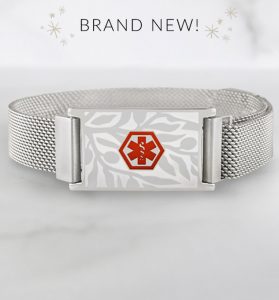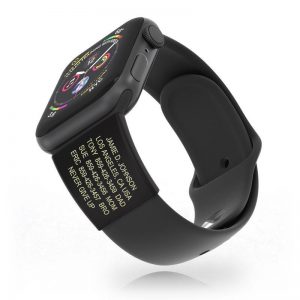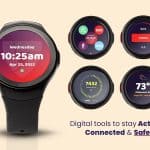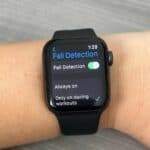
A medical alert bracelet can let first responders know about your medical conditions or allergies.
If you have a chronic health condition, take medication on a rigorous schedule, or if you just need peace of mind that first responders can contact your loved ones in case of emergency, a medical alert bracelet is a perfect solution. Reading through Bay Alarm Medical reviews will help you find a medical alert solution for your loved one. Whether you are beginning your search for a medical ID bracelet or if you are just looking for a new option, you will be pleased to realize you have a variety of choices. You can make decisions and create a medical alert bracelet that matches your needs and your personal style.
We’ve compiled a few questions to ask yourself while choosing a medical ID bracelet that can help you pick one that you’ll wear for years to come.
Why Do I Need a Medical Alert Bracelet?
First things first, ask yourself why you need a medical alert bracelet. Fortunately, medical alert jewelry is easy to purchase today and you don’t need a physician’s order. However, you should know why you need a medical alert bracelet in order to choose the best one for your situation.
If you are searching for a way to have the contact information of your family members in case of emergency, you can look for jewelry that is designed to give first responders your “in case of emergency”, or ICE, contacts. Road iD is an excellent example of bracelets that provide ICE information, and you can personalize up to 6 lines of text that can include your name as well as the contact information for your nearby loved ones.

A medical alert bracelet is helpful and can give vital information to first responders. Image credit: Lauren’s Hope
If you have a specific chronic health condition that could alter your care in an emergency situation, medical alert jewelry can speak for you if you cannot. Your physician can guide you to determine if you live with a certain condition that could warrant a medical alert bracelet, but common conditions include:
- Diabetes
- Heart conditions, such as high blood pressure
- Seizure disorders
- Allergies (food or medication)
- History of weight loss surgery
- Bleeding or blood disorders
- Cognitive or developmental disabilities, such as autism
- History of cancer, or current cancer diagnosis
- History of stroke
- Asthma or other respiratory conditions
- Kidney conditions
In the event that you live with one of these conditions, a medical alert bracelet can give first responders a glimpse of your diagnosis or needs. When first responders are able to access your information easily via a medical alert bracelet, they are able to adapt their treatment to meet your needs.
Does Confidentiality Matter to Me?
Your medical information is confidential, and you might feel hesitant to wear the specifics of your conditions on your wrist or neck. Fortunately, you have a variety of choices that can meet your preferences regarding privacy and confidentiality.
First, you can choose a medical alert bracelet that simply has the medical alert symbol on it. This alerts first responders that you have a special condition or allergy that could impact your care. However, it does not give them the specifics, which retains your privacy. However, it is important to note that if you are unable to answer questions because you are unconscious, first responders will not be able to know what type of condition or allergy you have. This could negatively impact your care or treatment.
If you want to be sure first responders know more about your medical condition, you can choose to engrave information on your piece of jewelry. Most people choose to engrave their name, medical conditions, and instructions. However, you can choose to use common medical abbreviations to preserve your privacy if you feel more comfortable. You can also choose a bracelet design that has your engraved information on the backside of your bracelet, or under the medical alert insignia charm. In both of these cases, your information is less accessible for people you pass on the street but is accessible for first responders in case of emergency.
What’s My Style Preferences?
Today’s medical alert jewelry market is huge, which means you have a lot of choices to design a piece of jewelry that suits your daily style. When you begin to make your decision, choose materials, clasps, and design that meet your needs.

Look for a medical alert bracelet that is easy to take on and off. Image credit: Road iD
There are a variety of jewelry materials to choose from when building your medical alert bracelet or necklace. Stainless steel or sterling silver are excellent options that are durable, beautiful, and are less likely to cause a reaction on sensitive skin. You can also find options with bands made of silicon that gives a more sporty look.
Next, determine how you are going to secure the bracelet or necklace. This might seem like a silly thing to consider, but if you have difficulty putting on your medical ID jewelry, you are less likely to wear it consistently. Some people choose to wear their medical alert bracelet or necklace all the time, never taking it off. However, others like to be able to remove their jewelry at nighttime or while in the shower. In any case, you have to be sure you can easily put your bracelet on and off. If clasps are difficult to maneuver, you can choose a strap that has a magnetic closure or one that is designed to slide on and off your wrist. You can also find medical alert bracelets that are designed to snap right on to your Apple watch or another smartwatch.
Finally, it is time to choose a design that works for you. Today’s medical alert bracelets can be as fancy or as traditional as you would like them to be. Take your time to choose the one you will enjoy wearing for years.
How Will I Pay for My Medical ID Bracelet?
Now that you have chosen your favorite medical ID bracelet or necklace, you can determine the most cost-efficient way to pay for it. While Medicare and Medicaid typically do not cover medical ID jewelry, you can take advantage of your flexible spending account with your healthcare insurance if you have that option. Further, if you are struggling to find a way to pay for a medical alert bracelet, you can contact your local senior services agency, as they can guide you toward other payment options that could meet your financial needs.
Your medical ID bracelet could save your life in an emergency situation or give first responders the opportunity to contact your loved ones. Make sure you choose a design that you will want to wear daily so that your information is readily available if an emergency occurs.


